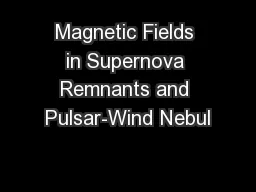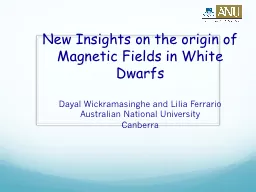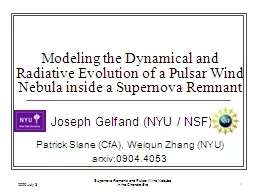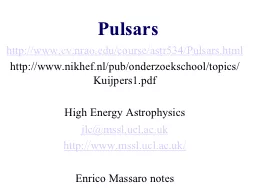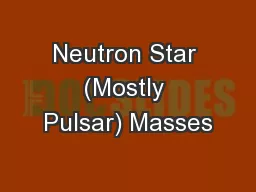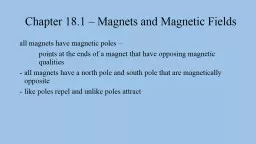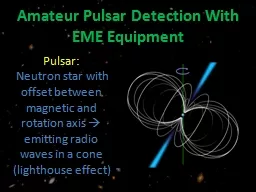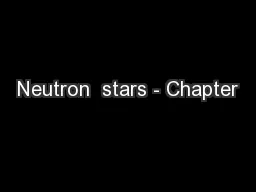PPT-Magnetic Fields in Supernova Remnants and Pulsar-Wind Nebul
Author : luanne-stotts | Published Date : 2016-07-01
20131218 Speaker Yu Hsun Cheng Professor Yosuke Mizuno Introduction Supernova remnantsSNR This is the structure resulting from the explosion of a star in a supernova
Presentation Embed Code
Download Presentation
Download Presentation The PPT/PDF document "Magnetic Fields in Supernova Remnants an..." is the property of its rightful owner. Permission is granted to download and print the materials on this website for personal, non-commercial use only, and to display it on your personal computer provided you do not modify the materials and that you retain all copyright notices contained in the materials. By downloading content from our website, you accept the terms of this agreement.
Magnetic Fields in Supernova Remnants and Pulsar-Wind Nebul: Transcript
Download Rules Of Document
"Magnetic Fields in Supernova Remnants and Pulsar-Wind Nebul"The content belongs to its owner. You may download and print it for personal use, without modification, and keep all copyright notices. By downloading, you agree to these terms.
Related Documents

